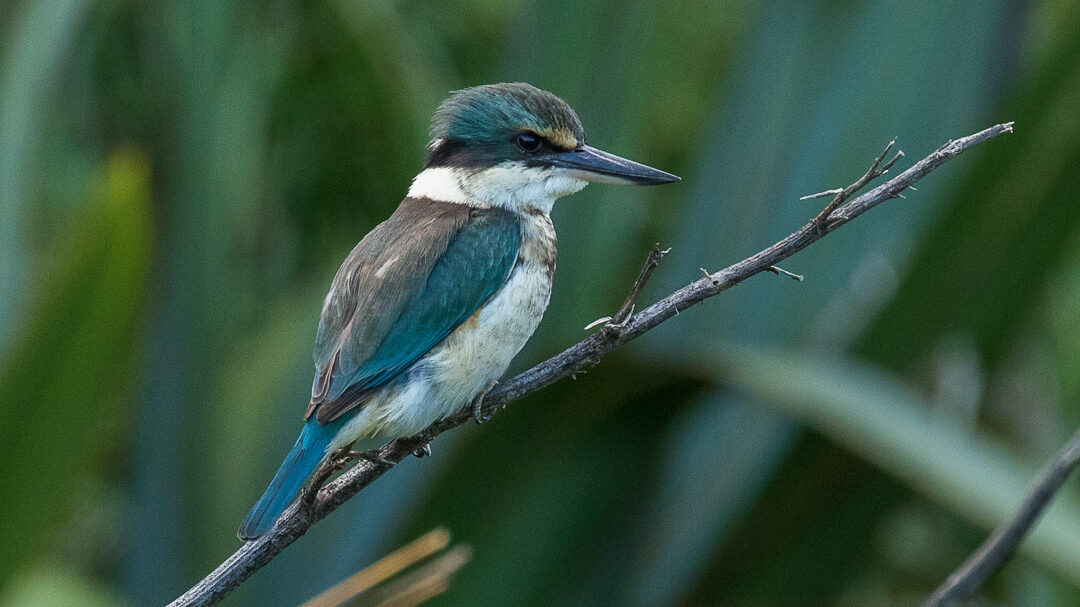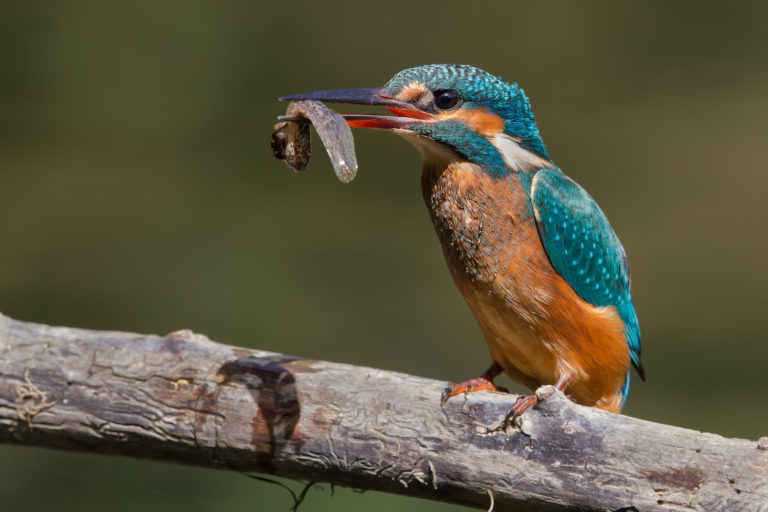Feeding backyard birds is popular in New Zealand – one recent study revealed up to half of us feed the birds in our gardens. It’s usually the seed-eaters and sugar-water sippers that benefit. No-one seems to have invented a feeder for birds that catch their food on the wing – the insectivores like fantails and kingfishers. Or have they?

University of Auckland researchers Daria Erastova and Margaret Stanley report in a recent issue of Notornis, that a kingfisher has been observed catching a free meal at a bird feeder in an Auckland garden. But it wasn’t the sugar-water that the kingfisher was after. So what else was going on?
“Feeding birds in residential backyards is becoming more popular worldwide, and allows residents to connect with nature. About half of New Zealand households feed birds in their gardens. Furthermore, almost 20% of households provided sugar-water, a food source aimed at attracting native nectarivorous birds.”
The Auckland University research focusses on the effect of residential garden sugar-water provisioning on the behaviour and health of native New Zealand nectarivorous bird species, such as tūī, bellbird and silvereye.
“Sugar-water feeders are becoming an increasingly prevalent means of encouraging native birds to New Zealand gardens, but they also have potential to attract insects, such as Hymenoptera (particularly bees, wasps, and ants) or Diptera (flies), to a concentrated food source, which in turn may act as a food source for insectivores. Here we report on a previously unpublished observation that occurred during behavioural data collection associated with our sugar-water feeder project.”
Kingfishers are found throughout the world and vary in the prey they catch.

“Some species are associated with water and aquatic prey, caught via aerial attack from a perch. However, some species, particularly those inhabiting inland habitats, prey on a wide range of small animals. The New Zealand kingfisher has a diverse range of prey, including lizards, crabs, tadpoles, crayfish, small fish, insects, spiders, mice, and small birds.”
One of the authors, Daria Erastova, observed a New Zealand kingfisher foraging for flies attracted to a sugar-water feeder in a Grey Lynn garden. The kingfisher was first noticed by a volunteer householder who observed the bird in his garden occasionally.
“The householder, who has been providing birds with sugar-water for the last five years, witnessed a kingfisher foraging on the insects visiting one of his two feeders in early afternoons. The householder was unable to give us more details on the nature of these insects; however, he observed “some big flies” around the feeder.”
Bees were also observed visiting the feeder, where they could easily access the sugar-water.
“The feeder in question was a handmade feeder, a wooden trough design, permanently installed on a tree. This open-style construction does not exclude insects and should not prevent larger birds, such as kingfishers, from catching insects feeding on the sugar-water.”
Although the researchers, visiting the garden, saw or heard a kingfisher several times, they didn’t see the feeding behaviour for themselves. But they had better luck at another study garden nearby.
“One of the other study gardens is located within the same suburb, only 1.5 km away from the aforementioned garden. Although the householder reported observing a kingfisher in his garden from time to time, we had never observed any individuals of this species in the garden. However, on the 14 August 2019, Daria Erastova was collecting behavioural data in this garden and saw a kingfisher visit the backyard three times despite a resident tūī pair vigorously attempting to chase it away.”
The unusual behaviour caught her attention.
“When the pair of tūī moved out of the garden, the kingfisher entered the garden again and perched within the large gingko tree to which the feeder was attached. This feeder is a commercial aviary feeder type, which consists of a 3 L inverted white plastic bottle on an open dish, within a wooden frame. A few moments later the kingfisher slightly turned to face the feeder, then plunged swiftly downward. As the bird reached the feeder, it hovered for less than a second at the feeder and caught a large black fly crawling on the outside of the feeder bottle. Immediately after catching its prey, the kingfisher beat its wings vigorously to gain height and flew away from the garden.”
The feeder bottle was white, making an easy visual contrast for the kingfisher to detect insects. Studies of other kingfisher species have found that some include flies, bees, wasps and ants in their diet, so the kingfisher’s interest in the insects at the feeder does make sense.
“However, to the best of our knowledge there are no previous published observations of kingfishers in either New Zealand or elsewhere hunting for insects at sugar-water feeders. Thus, this is a single documented observation of a kingfisher taking advantage of sugar-water feeder confirmed by anecdotal observation (as reported by a householder).”
So was it the same kingfisher in both gardens, or have multiple kingfishers learned the technique?
“Given we never marked individual kingfishers (e.g. via colour banding), we can only speculate if the observed behaviour could be a learned behaviour, potentially of a single bird visiting the two gardens in Grey Lynn. However, this assumption might be supported by the fact that such a feeding behaviour is expected to be quite rare due to the low expected population density of kingfishers in the highly urbanised inner city suburbs of Auckland and given sugar-water feeders serve as a very unnatural and inconsistent supplementary food source.”
Might other insectivore birds also be learning to stake out sugar-feeders? If you have a sugar-water feeder in your own garden, keep an eye out for anything unusual happening. The researchers are keen to hear if the behaviour is more widely spread.
“It would be interesting to investigate the potential for sugar-water feeders to support other garden insectivorous species, such as New Zealand fantail and grey warbler, through attracting and concentrating insects to a source point. Tūī, bellbird, and silvereye also include invertebrates such as Diptera species in their diet, especially during the breeding season.”
Be warned, however. There could be some negative consequences too.
“First, the discovery of a new insect source by introduced insectivorous birds, might lead to physical exclusion of smaller native nectarivores, such as silvereyes, that cannot compete for feeder access with larger birds. Second, kingfisher diet includes small birds, so there is a risk of predation of smaller birds, such as silvereyes. Such predation may then have a negative influence on householders’ attitudes to sugar-water feeding.”
“We encourage other researchers and/or observers to report any events of invertebrate consumption by insectivorous birds at sugar-water feeders in New Zealand gardens, so that we might better understand the prevalence of this behaviour and the potential importance it may have for native urban bird communities.”

